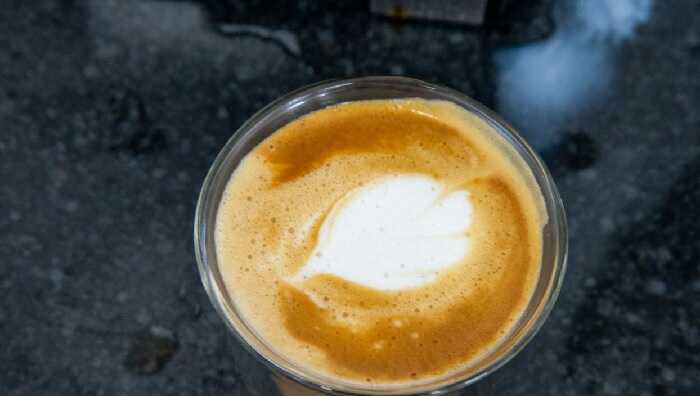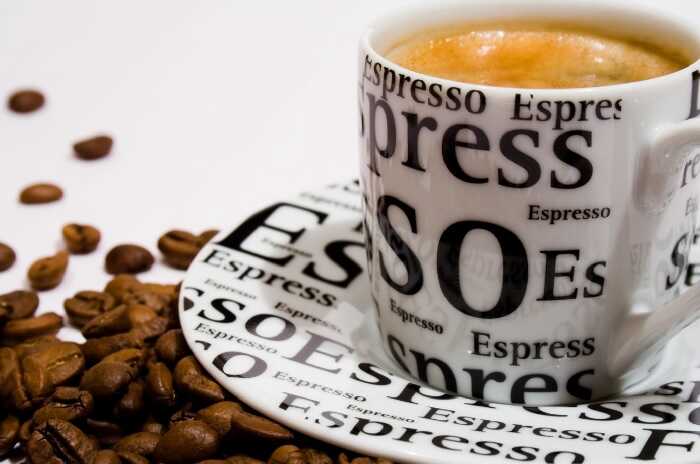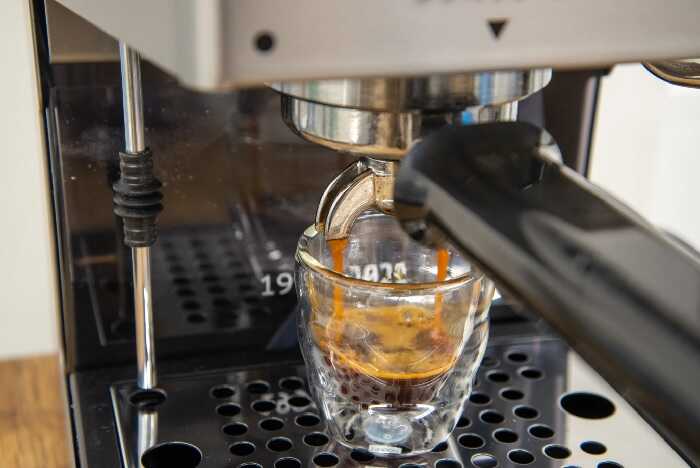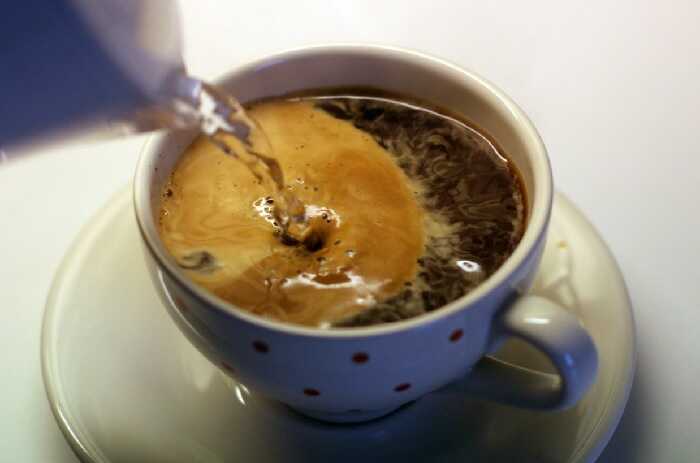Many coffee aficionados will find a pretty obvious similarity between a regular cup of drip coffee and a thermal carafe of Espresso. Both consist fundamentally of hot water flowing through the ground coffee and out of a filter.
Let’s find the best brewing method to give birth to a wonderful cup of coffee in the article below!
Contents
How To Make Espresso – An Ultimate Guide 2023
Making a perfect shot requires adherence to specific guidelines. Below are the two typical methods on how to make Espresso at home.
How To Make Espresso With Machines?
Best Espresso Recipe Using A Machine
Cook time: 2 minutes
Prep time: 3 minutes
Total time: 5 minutes
Tools you need:
- Espresso Machine: You need a qualified machine to build enough pressure and consistently generate hot water.
For those searching for suggestions, here are my selected picks for the best espresso machines for home. Watch out! These candidates may end up costing you some pennies to spend!
If you don’t wish to go with any espresso maker, skip this part and continue seeing how to make tasty Espresso without a machine right below!
- Burr Grinder: The best source of evenly and finely ground coffee will always be a burr grinder as it offers consistency, the key to success in the true Espresso.
Ingredients:
- 9 to 18 grams of coffee: Almost any coffee will do splendid work. Nevertheless, be mindful and pick up one that suits your taste!
Water: Use filtered, clean water, especially if tap water is hard. Since water makes up the majority of coffee, its good quality is crucial to decide the taste of your coffee!

Direction
Step 1: Grind the coffee.
You should use roughly 9 grams of Espresso roast coffee for a single shot of Espresso. If you want a double shot, add 18 grams.
Bear in mind that the coffee should be ground to a fine consistency. Different roasts and brands of espresso beans will require a varied machine grind. You should implement a few test runs to get the right one.
Step 2: Compact the coffee grounds neatly.
Fill your espresso basket or so-called portafilter with coffee grinds to the point where it slightly overflows the top.
Next, place the portafilter on a folded towel and use a temper to tamp the grounds evenly. Press solidly until it is completely crushed.
Alternatively, employ a knock box, which works best for tamping and helps you get rid of used grinds.
A heads-up: For the ideal espresso shot, the coffee grinds should be as level and consecutive as possible!
Step 3: Pull the shot.
Inserting the portafilter into the espresso maker and triggering the shot are vastly significant tasks not to miss out on. Because most home espresso makers include an automatic option for this, you won’t have to put in too much hard work.
You will know whether it is a well-pulled espresso shot once you get the sense of a rooted espresso flavor and a lovely foamy crema. The exquisite taste will persist in your mouth for up to 25 to 30 seconds!
Step 4: Think about any alterations coming into sight.
“Practice makes perfect.” It takes some time to get the coffee well grind and know which amount is just right to the taste. So, be patient!
When it comes to whatever thing could go wrong, do not hesitate to add up a little bit more coffee grounds or a finer grind for stronger coffee if the shot is too watery.

How To Make Espresso Without A Machine?
Method #1: The Moka Pot
Longing for an espresso-like pour that lifts your spirits and gives you extra energy? This small kettle is the best bet for a budget option! You’ll experience a delicious, rich flavor that is unmistakably neither coffee nor Espresso.
Follow this guide to get to your favorite joe most neatly!
- Step 1: Take 20–22 grams, or roughly 2 teaspoons, of coffee (other shipshape coffee beans can work wonders as well!). Finely grind the beans as much as you can.
- Step 2: Fill the bottom of the pot with 3-1/2 oz of water. Pour the coffee grinds into the built-in filter. Shake the filter to settle them. Place the Moka pot on a burner with a medium heat setting and lock the spouted top firmly.
- Step 3: The remaining steps of the procedure are similar to waiting for a tea kettle to whistle.
Keep waiting until the coffee in the higher pot level starts to foam and expand. At that point, the hot water will produce the pressure necessary to create a concentrated espresso and some foam.
Method #2: The French Press
Using a French press to make Espresso coffee produces less caffeine. So how do you make Espresso with the French press? Now, all you should do is follow these steps:
- Step 1: Heat a cup of water.
- Step 2: Add 2 teaspoons of freshly and finely ground coffee to your French press while you wait for the water to warm up.
- Step 3: Pour some of the hot water into the French press and give it a quick stir.
- Step 4: After four minutes, steadily depress the plunger every few seconds. The grind’s size may make it difficult to push the plunger down.

Method #3: The Aeropress
The AeroPress is another great and inexpensive option for simulating Espresso.
An AeroPress “espresso” has a texture that may differ from what you would receive from a fancy machine. Still, the flavor and amount of caffeine content are amazingly equal to machine espresso.
Now, here is how to brew Espresso properly when using the Aeropress:
- Step 1: Put the clean water boiling in the kettle. If you employ a temperature-controlled kettle, adjust it to 205°F.
- Step 2: Unscrew the black AeroPress cap and place the round paper filter inside. Rinse the filter in hot water to eliminate the taste and smell of paper. Pour away the cleansing water from your AeroPress cap.
- Step 3: 3 tbsp or 15 grams of ground coffee should be added to the filter after you tare the scale. Shake again to level it, then tare the kitchen scale once more.
- Step 4: You’ll need to pour water two times. The first time, add 40g of warm water to the coffee grounds for it to bloom before the timer goes off.
Ensure you completely cover the grounds. Enjoy the aroma after 30 seconds of blooming!
- Step 5: Next, add 200g more water. Make sure it is about one inch away from AeroPress’s top. After pouring, screw the cap with the filter into position.
- Step 6: Put the cap in place firmly.
- Step 7: Prepare to flip the AeroPress over after two minutes. The plunger’s seal should stop most leaks, but I prefer to keep a mug over the cap before flipping it.
- Step 8: When you hear a hissing sound, gradually lower the plunger. It should just take a minute to complete this step. That’s how you serve a delectable cup of coffee with an AeroPress!

Espresso FAQs
What Are The Best Coffee Beans For Espresso?
The list you may wish to consider Peet’s Arabian Mocha Sanani, Volcanica Coffee Tanzania Peaberry, Stumptown Hair Bender, Koa Coffee Estate Dark Roast 100% Kona Coffee, etc. However, remember the level of suitability may vary depending on your preference for espresso taste.
Is Espresso Bad For You?
No, but you should take it moderately.
According to a recent study, men who drink espressos can have greater cholesterol levels than women. Previous research has shown the connection between the natural compounds found in coffee and higher blood cholesterol levels, a concern linked to heart issues like stroke.
Find out further information with my in-depth explanation in this article!

What Is Espresso Powder?
Espresso powder is roasted and drained ground coffee. The powder may resemble finely ground beans, but its coffee flakes are easier to dissolve in liquid than ground type’s since they have been dried more delicately.
Conclusion
As a coffee connoisseur, the procedure for making Espresso certainly takes time. Unless we’re content with K-cups, there’s no way for you to call for a quick solution in the sphere of Espresso.
My article on how to make Espresso will greatly help you. Don’t hesitate to leave a comment if you have any concerns. See then! ()

